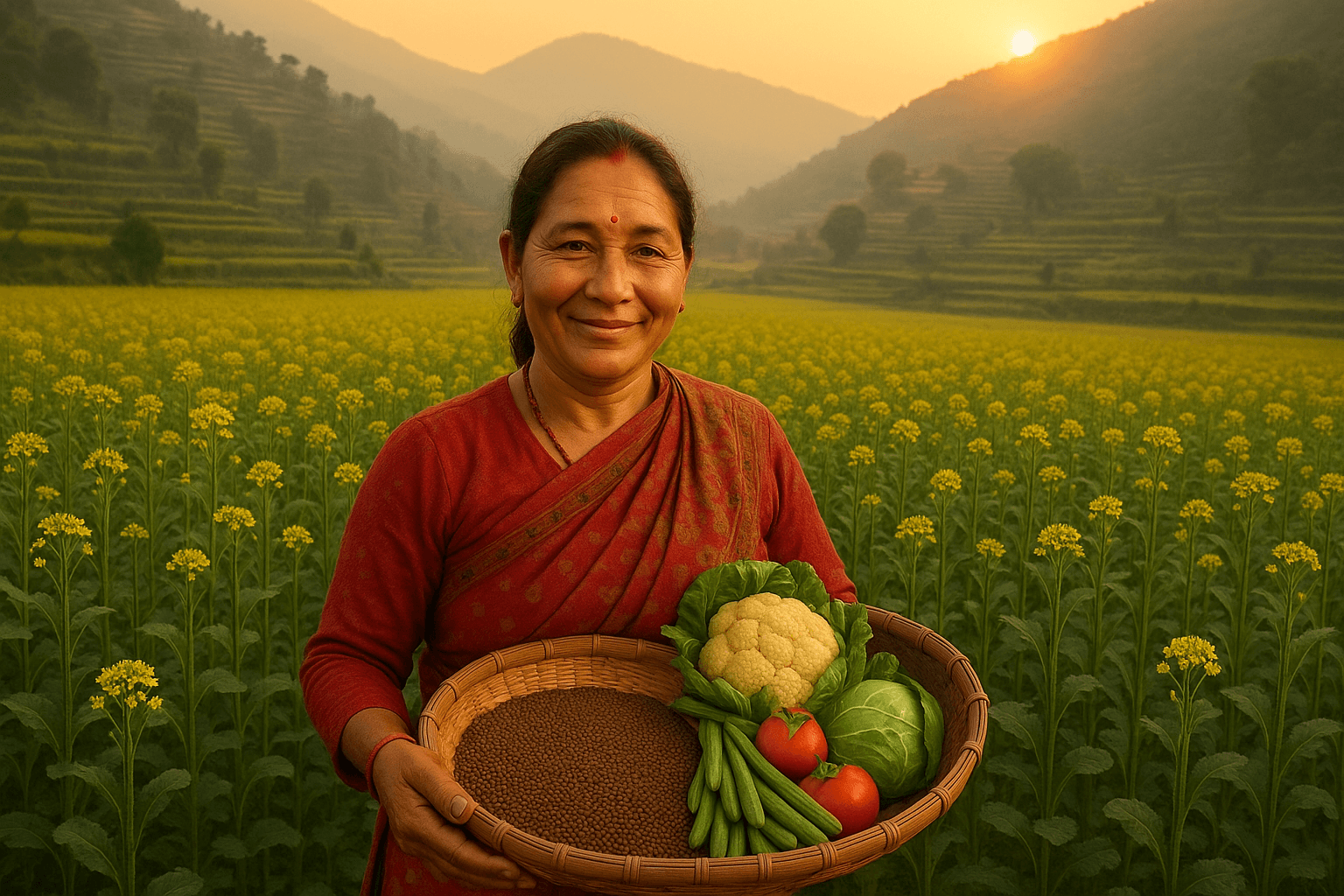In the quiet village of Dhading, 42-year-old Sita Devi used to grow vegetables just enough to feed her family. Today, she runs a small-scale organic farm that supplies fresh produce to nearby towns and schools—and she credits the transformation to learning, patience, and using local resources wisely.
🌱 The Beginning: One Small Plot
Sita started with a 5-ropani land, where she grew seasonal vegetables like cauliflower, beans, and spinach. At first, she struggled with pest problems and low market prices. She didn’t use any chemicals but didn’t know how to make the most of organic methods either.
📚 Learning and Adapting
Everything changed when she joined a local agriculture training program supported by a cooperative and learned about:
- Composting using cow dung and kitchen waste
- Natural pest repellents (like neem water and garlic spray)
- Seasonal planting cycles
- Market timing and crop selection
MeroKishan’s mobile updates also kept her informed about weather conditions and market prices.
🛍️ Connecting to the Market
Instead of selling to middlemen, Sita teamed up with three other women in her village. They:
- Branded their vegetables as “Fresh from Dhading”
- Supplied directly to a local school and two groceries in Kathmandu
- Used QR codes on packaging to share farm details and freshness guarantee
💰 Results That Matter
In just one year, her monthly income increased from NPR 5,000 to NPR 30,000. Not only that, but other women in her village have also started similar ventures with her guidance.
“People trust my vegetables now. They know who grew it and how. That makes me proud,” says Sita Devi.
Her story shows that with small steps, right knowledge, and community support, local farming can become both profitable and sustainable.
🌾 Inspired by Sita’s story?
MeroKishan is here to support your journey too. Reach out to us for training, tools, and local success networks

